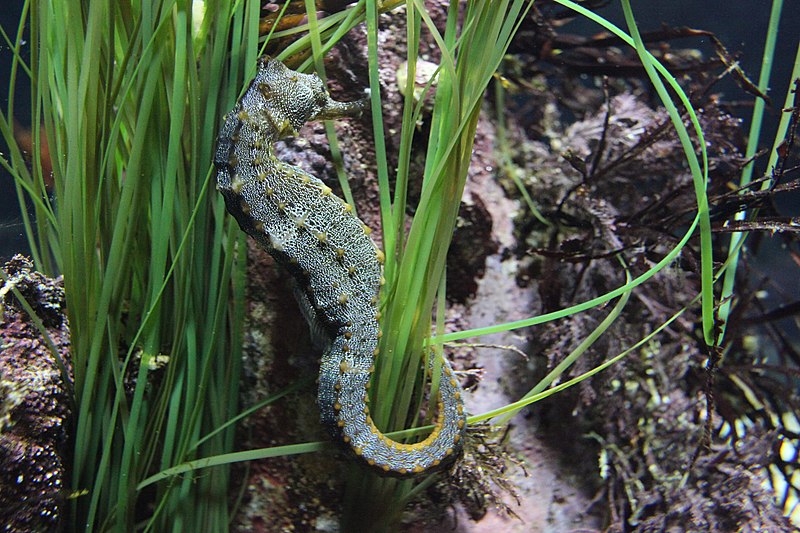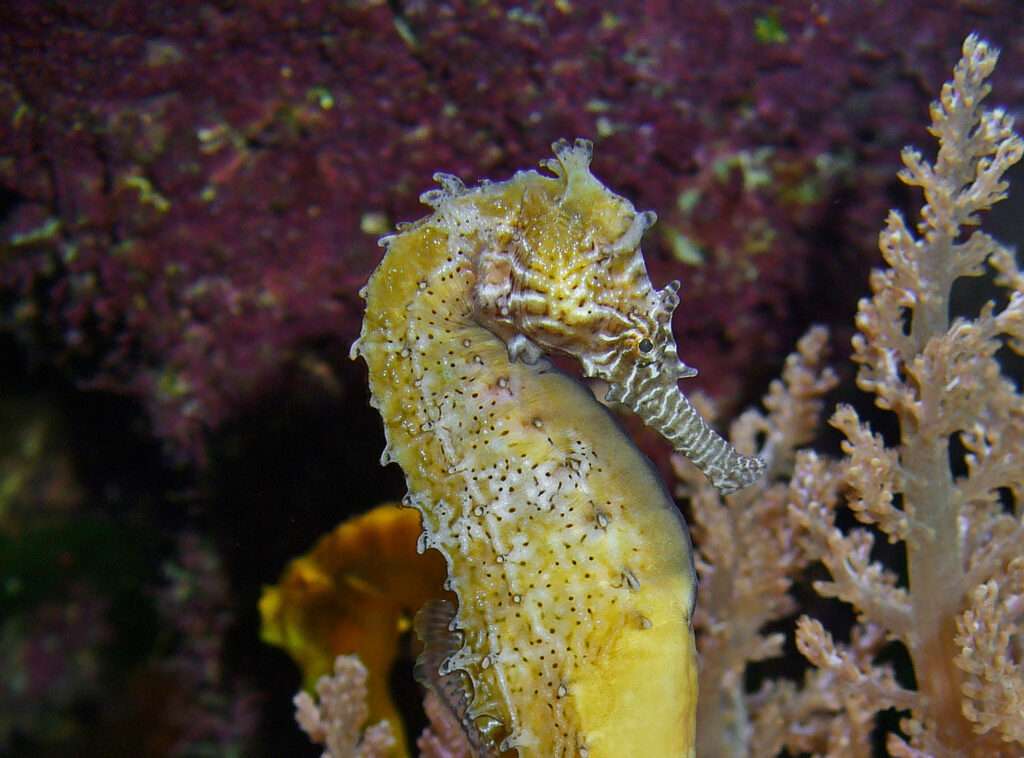
Seahorses are quite intriguing. There are around 35 different species of seahorses, with the Pacific Seahorse being the largest. In temperate and tropical salt waters, they can be discovered everywhere in the world. These creatures are distinctive because they are the only kind of animal in which the male conceives.
Seahorses are marketed commercially as live aquarium pets and as dead specimens for use in folk remedies and as collectibles. Some species, like the Pacific seahorse (H. ingens), are in danger of going extinct due to direct exploitation, incidental capture (bycatch) in other fisheries, and the loss of their coastal habitats.
Habitat
It can be found in abundance throughout the eastern Pacific Ocean coast. Regional Biogeography native of the arctic indigenous neotropical oceanic islands native of the Pacific Ocean.
From 1 to 20 meters deep, giant seahorses can be found in protected bays, over reefs, and in subtidal seagrass areas (most commonly from 3-18 m). They are frequently seen with their tails wrapped around gorgonian coral branches, strands of sea grasses and sea whips, and black coral trees in order to conceal themselves from predators.

Physical Appearance
Giant seahorses can grow to be 30 cm long as adults. Populations have a diverse range of skin tones because these animals may alter their skin tone in response to their surroundings. Muddy brownish-green yellow, and maroon, are the body hues. Small black and white patches and longitudinal streaks could be present on the body’s darkened surface. The neck curves with the rest of the body at a right angle. An elongated snout protrudes from the front of the face, and a bony structure with five points on it is termed a coronet on top of the head.
A knobby, bony plated ring that runs from the tail to the trunk distinguishes the backbone’s anatomy from that of other vertebrates. It may coil around seagrass and other items because the tail becomes prehensile and flexible. The males and females of this species differ in terms of brooding pouches beneath the tails and little keels on the breasts, while the females typically have a black patch ventrally on the anal fin.
Food Habits
Zooplankton and tiny crustaceans make up the majority of the diet. Mysids (Mysidae sp.) and brine shrimp (Artemia sp.), small shrimp-like crustaceans rich in lipids and protein, are two common foods consumed by giant seahorses. Children may consume phytoplankton. Seahorses don’t have teeth; instead, they take in prey through snouts that resemble tubes.
Economic Importance for Humans
International trade in aquariums depends on giant seahorses. They are popular attractions in public aquariums including the Birch Aquarium in San Diego, California, and the Aquarium of the Pacific in Long Beach, California. This species of seahorse is used commercially for use in traditional Chinese medicine, just like all other species. Population decreases and increased conservation issues are results of these uses.
Table





